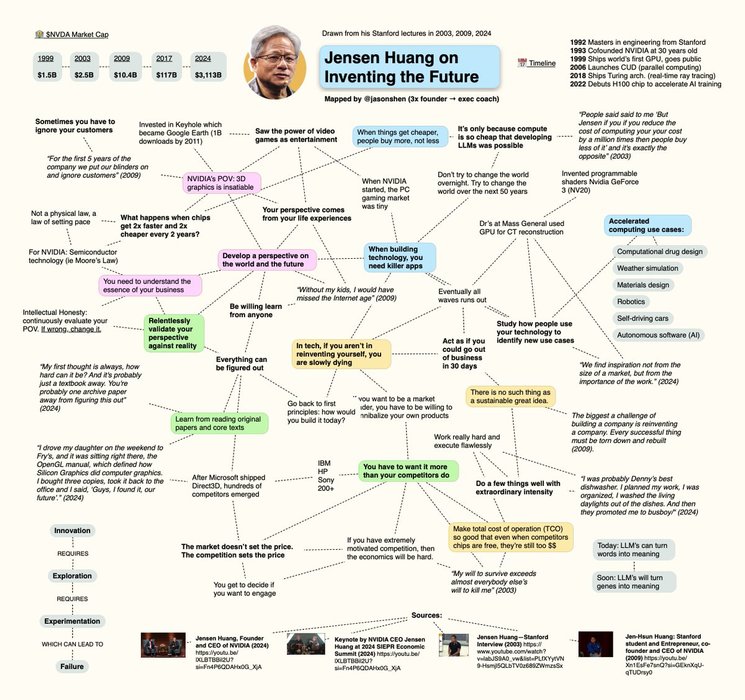Sublime
An inspiration engine for ideas

Buried in 10 years of Jensen Huang's Stanford talks are the secrets to building the most valuable tech company in the world.
I dug through hours of talks and mapped out how the 30 year veteran CEO of NVIDIA thinks about inventing the future. https://t.co/lnMIrjZFBV
Initially sold through the newsletter
Need indexing
I’m a lifer in it
Genuinely loves tech but also skeptical of it
Less about hitting milestones and more about belief in the team
We’re trading scale and speed for freedom.
The problem with gen AI is that it’s contextless by default. Give it my references, my taste, my point of view.
Build a company that
... See moreNegotiating for space within the phone was always fraught. If engineers had their way, it would’ve been twice as thick. But ID was unrelenting on the size, forcing the engineers to either compromise or innovate.
Patrick McGee • Apple in China
The Co-Creator of the iPod and iPhone on Radical Innovation (with Tony Fadell)
hbr.orgSource: Fast Company
Mark Fisher • Exiting the Vampire Castle
Cliché is not desirable.
